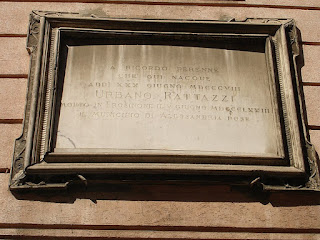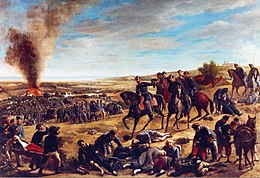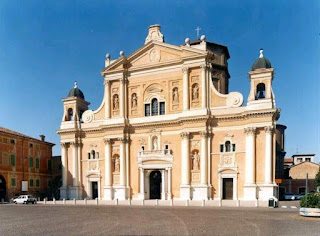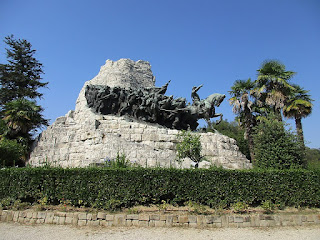Last ruler of Naples wanted to help the poor
 |
| Francis II ruled for the final year before unification |
Although he reigned over his subjects for one year only, King Francis is remembered as a humane ruler who believed he had a duty to help the needy. He also had a strong Christian faith, and he was declared a Servant of God by Pope Francis in 2020.
Born in 1836, Francis II was the only son and heir of King Ferdinand II of the Two Sicilies, with his first wife, Maria Christina of Savoy. He was christened Francesco d’Assisi Maria Leopoldo. Sadly, his mother died only five days after giving birth to him.
Five years later, King Ferdinand married Maria Theresa of Austria and she became stepmother to the young Francis, who was said to have feared her, but was also greatly influenced by her.
Francis married Duchess Maria Sophie of Bavaria in 1859 in Bavaria. They had one daughter, Maria Cristina Pia, born after they had been married for ten years, but she died after just three months
After the death of his father, Francis ascended to his throne in May 1859. He reigned over the Kingdom of the Two Sicilies - Regno delle Due Sicilie - which encompassed all the Italian peninsula south of the Papal States, as well as Sicily. This area was under the control of the House of Bourbon from 1816 to 1861.
It was called The Two Sicilies, because the Kingdom of Naples had also been known officially as the Kingdom of Sicily and, collectively, they had been referred to as ‘both Sicilies’.
Francis is recorded to have appointed committees to improve conditions in prisons and he lowered taxes to help poor people. He ordered wheat stocks to be distributed to poor people at a low price, letting the state bear most of the cost, and he founded schools and universities.
 |
| Francis II with his wife, Duchess Maria Sophie of Bavaria |
After Garibaldi crossed the Strait of Messina and advanced on Naples in 1860 in his bid to unify Italy, Francis II and his wife, Maria Sophie, sailed to Gaeta to join up with the bulk of his troops. The following day, Garibaldi entered Naples and formed a provisional Government.
Garibaldi’s troops defeated a Neapolitan force at the Battle of Volturno and captured Capua. When only Gaeta, Messina, and Civitella del Tronto still held out against him, Garibaldi laid siege to Gaeta.
Francis and Maria Sophie behaved with great courage and it was not until February 1861, when the French fleet that had been protecting them from an attack launched from the sea was withdrawn, that they finally gave in.
After Francis II had been deposed, the Kingdom of the Two Sicilies ceased to exist and its territory was absorbed into the Kingdom of Sardinia, which later became the Kingdom of Italy.
Francis and Maria Sophie moved to Rome to live as guests of the Pope where they maintained a Government in exile that continued to be recognised by some Catholic countries in Europe. Just before the Italian troops moved in to occupy Rome in 1870, Francis and his wife disbanded their Government and embarked on a wandering life, living in parts of Austria, France, and Bavaria.
In 1894, Francis died at Arco in Trentino-Alto Adige. Maria Sophie survived him for another 31 years before she died in Munich.
After the death of Francis, his half-brother, Prince Alfonso, became the pretender to the throne of the Kingdom of the Two Sicilies
The case for the beatification and canonisation of King Francis II was introduced in December 2020 by Cardinal Crescenzio Sepe, the Archbishop of Naples. When the Pope made King Francis a Servant of God, it was seen as the first step towards him becoming a Saint.
The award winning 1989 film, O Re, directed by Luigi Magni, was loosely based on the life of Francis II. The actor Giancarlo Giannini played the part of King Francis.
 |
| The ruins of the Castello di Arco sit on a rocky outcrop overlooking the town of Arco |
Arco is a small comune - municipality - in the region of Trentino-Alto Adige, just 5km (3 miles) from the northern tip of Lake Garda. Its main claim to fame is being the place where King Francis II died. The ruined medieval Castello di Arco, built on top of a rocky spur, is one of the important sights in the town and featured in a watercolour by Albrecht Durer. The 16th century palace, Palazzo Marchetti, has a portal that is attributed to Giulio Romano. Tourism is a major part of the local economy with many Germans and Austrians coming over the Brenner pass to visit Arco. Wind surfing on Lake Garda and rock climbing on the city walls are popular activities for visitors. Arco also hosts one of the most popular Christmas markets in Trentino-Alto Adige.
Stay in Arco with Expedia
 |
| A view of the harbour and waterfront at Gaeta, on the coast between Rome and Naples |
Gaeta, where Francis II went with his wife as Garibaldi advanced on Naples, is a small city in the province of Latina in Lazio, 120 km (75 miles) south of Rome, set on a promontory stretching towards the Gulf of Gaeta. Today it is a fishing and oil seaport and a popular resort with tourists. It has a huge Aragonese-Angevine Castle, which dates back to the sixth century and the Cathedral of Assunta e Sant’Erasmo, which was built over a more ancient church and consecrated by Pope Paschal II in 1106. Other attractions include the Monte Orlando natural park, a protected area with Roman ruins, hiking trails, and panoramic views, featuring the Mausoleum of Lucius Munatius Plancus. Gaeta was where Pope Pius IX was given a shelter by Francis’s father, Ferdinand II, after being besieged in Palazzo del Quirinale in Rome, in 1848, having lost control of the Papal States to revolutionaries.
Gaeta hotels from Hotels.com
More reading:
Francis I, the ruler who saw the Austrians from Naples
The architect who helped Bourbon king Charles VII transform Naples
The Bonaparte who was made King of Naples
Also on this day:
1660: The birth of Saint Veronica Giuliani
1848: The birth of tyre maker Giovanni Battista Pirelli
1888: The birth of tenor Tito Schipa
1983: Pope John Paul II visits would-be killer in prison
1985: Terror attack at Fiumicino Airport



.jpg)




_-_Exterior.jpg)











_-_Palerme._Portrait_de_Giuseppe_Garibaldi,_juillet_1860.jpg)








.jpg)

.jpeg)

.jpg)